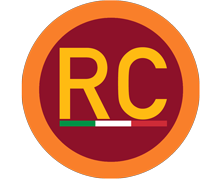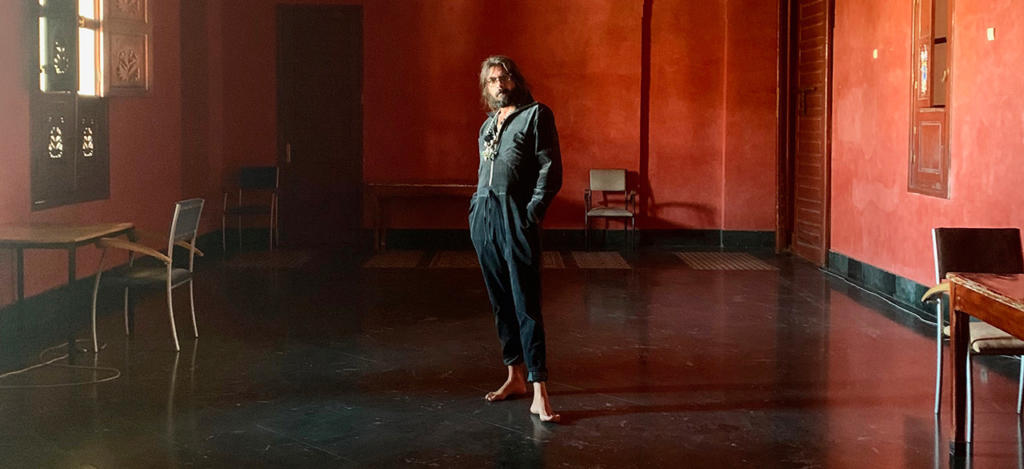
On the occasion of Art Basel Miami 2020: Traces by Firouz FarmanFarmaian is an exhibition at Palais Aziza- in augmented reality. Curated by the agency We r Nomad with Janet Rady fine Art London, nouvelle vague gallery in Sotogrande and the Kebira Foundation in San Francisco.
Live art-talk to discuss our past ongoing and future multi platform collaborations: TRACES VR & Augmented on Instagram page @firouzfarmanfarmaian on 2020 Friday 4 December @7pm CET/ 1pm MIAMI time.
Traces vr is the beginning of the virtual reality of the Persian multidisciplinary artist Firouz FarmanFarmaian, the physical retrospective in progress at Palais Aziza and spa – Palmeraie in Marrakesh – enriched by the new art video Tracea soundwalk. The film takes us on a musical-narrative and visual journey through FarmanFarmaian’s memorial explorations within the walls of the fabulous Palais Aziza in Marrakesh.
The art works created for this exhibition, of a classical modernity, are like passing souls looking for a truth, a story. The art works, which almost seem to move in infinite space, are so true that they lack only the breath, beyond the experience of the senses.We could soon admire them here on line in this moment.
Originally privately launched alongside the 1-54 Marrakesh Art Fair in February 2020 as an extension of FarmanFarmaian’s monumental installation at the Théâtre Royal on the Fair’s Public Program – exhibits were graced by high profile viewings including her Majesty Farah Diba, Lady Penny Mountbatten and Vanessa Branson with a donation going towards Maryam Montague’s Project Soar Foundation for young girl empowerment in Morocco.
Curated physically + digitally by We r the nomads agency on the Nouvelle vague artspaces vr platform, it includes crossover collaborations with Janet Rady fine Art extending the exhibit onto her specialized, curated selection on the JRFA Artsy page and with San Francisco based Kebira Foundation to which part of the funds related to online sales will be reversed in support of Moroccan Artists suffering from the 2020 lock down.
The VR exhibition includes Talkhimt-Tadounit a 9:58’
Soundtrack created by FarmanFarmaian’s new experimental sound platform FORRM.
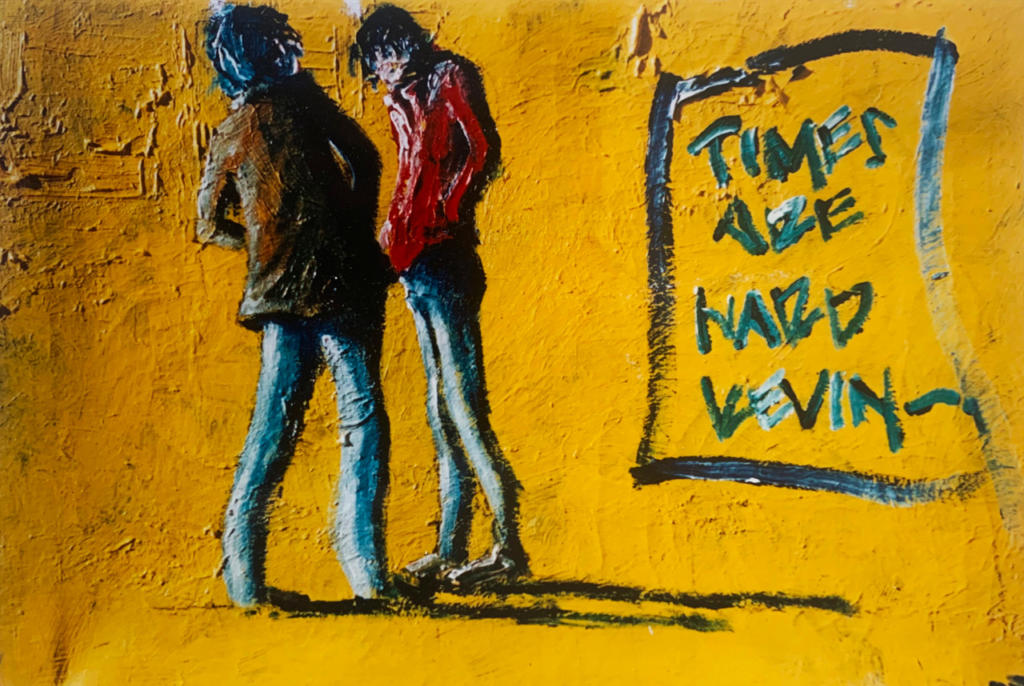 Inteview with Firouz FarmanFarmaian
Inteview with Firouz FarmanFarmaian
1-How does your artistic career start? Your starting point?
My first artwork entered my father Tino’s collection in 1989 and it still hangs in his Marrakech reading room. It depicts him on his horse playing polo and is simply called ‘Polo Player’. I used to follow him to his games in Sotogrande when I was back South of Spain from Paris boarding school, on holiday. I would sketch sitting next to the pitch and back at our Marbella villa get the scenes onto medium size canvas with thick oil throwing in horses, players, the game. It was all furious movement, color, impact – intensely passionate.
I have felt close to Monet and Van Gogh since childhood due early visits to the Musée d’Orsay and the Musée Marmottan. Growing up in Paris under the tutelage of my grandfather – Persian grand architect Aziz FarmanFarmaian – had its perks. When the opportunity to paint arose, I was eager to express my fascination for impressionist palettes via vivacious polo scenes, and evolved from there. An active involvement in the Parisian graffiti scene – joining the Artistes Associés collective at age 16 – made me experiment with spraycan art, cruising Paris suburbs in the dead of night painting in empty lots and – often illegally – in the metro painting wagons. It solidified a style, a sense of performative immediacy – of urgency – in the treatment of the line, involving pop-art curves and stylistic graphic design innuendos that have been hanging on my work belt ever since.
At a point I brought back what I had picked up on the street onto canvas – through a post-graffiti urban acrylic series, the Squash Metro – but kept on painting Polo, creating a first portfolio of clients, auctioning at Drouot as I turned 18 and placing a piece at the headquarters of the Banque Lazare, avenue Montaigne. At that point, I passed my baccalaureate and listed up at the Ecole Spéciale D’Architecture in Montparnasse for two years granting my grandfather his initial wish. But after a transitional year studying Graphic Arts at the Penninghen school of design in the quarter latin I surprised many – angered some – bifurcating away in order to explore new creative territories and experiment with fresh media. It would first involve first film then sound. From the very start I envisioned my career as a multivalent creative platform.
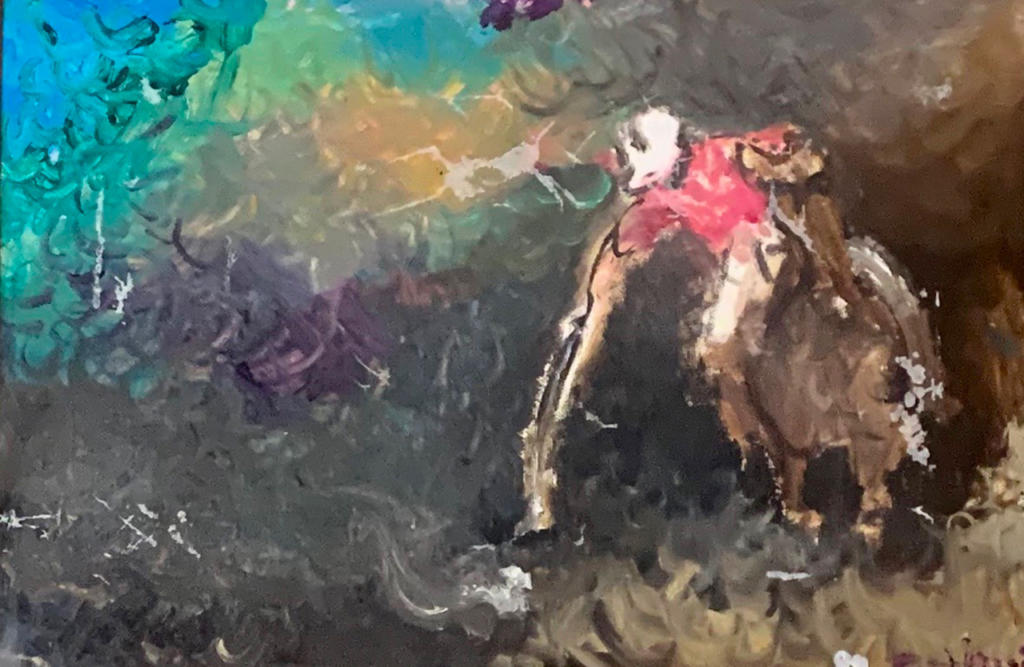 2- Today art is often reworked and revisited…what do you think? Who are you inspired by? what is the essential tool for understanding your contemporary world for you?
2- Today art is often reworked and revisited…what do you think? Who are you inspired by? what is the essential tool for understanding your contemporary world for you?
New York artist Carroll Dunham once said something like : true art is art well stolen. Picasso would agree. Cubism ripped off African tribal art for one thing. We should reflect on the fact that coincidences create great changes and errors are central. Bacon adds that any good artwork is built on layers of successful errors.
In the last seven years I have learnt much by observing the multilayered approach of Gerhard Richter, starting from his Beirut photographic paintovers up to his monumental Cage abstract panels. Alongside Richter I devote much love to American artist Cy Twombly. I consider him being the true post-impressionist/post-expressionist painter of our time, evolving within a fabulous Tuscan lifestyle whilst developing a fruitful artist-galerist relationship with Armenian-American art dealer Larry Gagosian – which is a rare thing. He went to paint explosive monumental panels inspired by the natural world right up to his last days.
Of my contemporaries I have been attracted to the prismatic, intellectualised approach of Colombian artist Oscar Murillo. But also to New York artist Bob Bradley’s sequenced series of art + music, to Sterling Ruby’s grandiose use of textiles seamlessly spilling his touch onto the fashion industry. In love with Corean artist Kimsooja’s nomadic borderless installations and Ghanaian Sculptor El Anatsui’s tapestry like tribal cloth installations. Also truly essential, the thought of sadly recently passed Moroccan master Mohamed Melehi, symbol of the 1960’s Afroberber Casablanca school movement that strived to integrate tribal crafts into contemporary art practice. In that precise matter, I reconnect to the idea of vattan – homeland in Persian – and to my own tribu. I grew under the shining presence of my grand-aunt Monir Shahroudy Farman-Farmaian, the most prominent Iranian artist of the contemporary period that achieved an artistic practice that wed the geometric patterns and cut-glass mosaic techniques of our Iranian heritage with the rhythms of modern Western geometric abstraction – linking tradition and crafts to the best contemporary art has to offer. I believe that to process the future we must work to strengthen the invisible traces of memory.
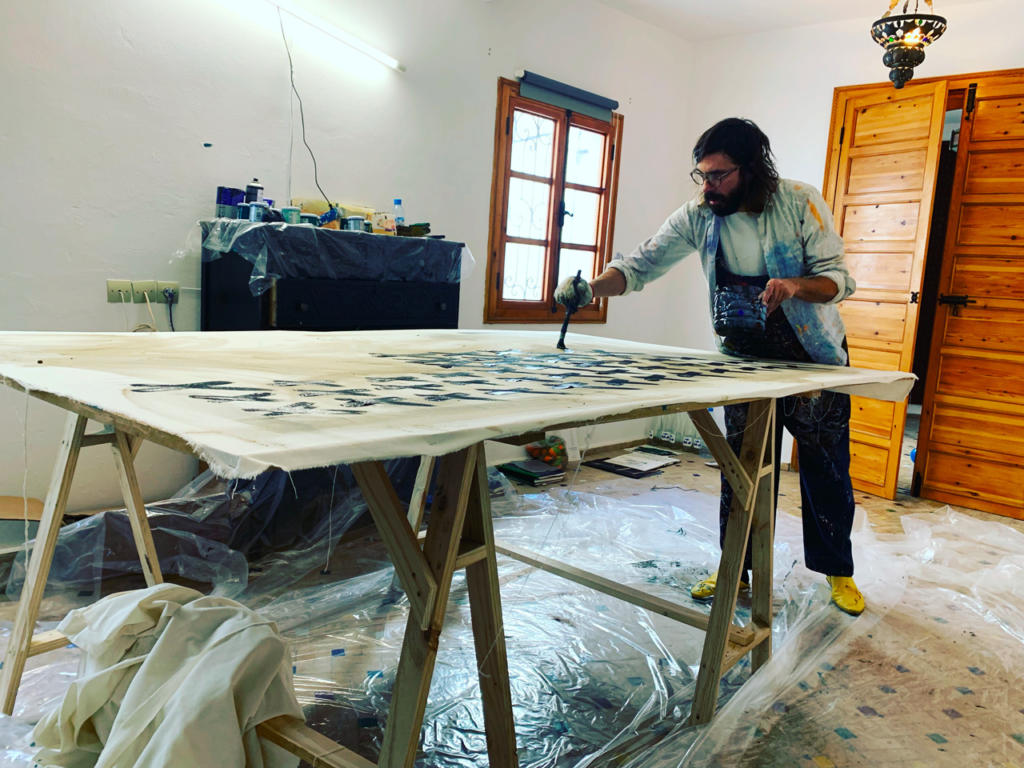 3 – All personal technique how important is the idea and how important is the manual skill, and where does it all start?
3 – All personal technique how important is the idea and how important is the manual skill, and where does it all start?
When I passed my philosophy baccalaureate I was proposed to develop an argument on which of the artist or the artisan came first. The question has followed me. I grew up refining and defining my drawing skills tutored by an architect of the Bauhaus, schooled in pre-war and post-war Paris Beaux-arts where excellence of the ‘trait’ – of the line – is central. As adolescents my grandfather made my brother Teymour – that went to become a fantastic Architect – and I sketch countless Ionian, Doric or Corinthian columns embedding a sense of classicism into our approach. In my years studying Architecture I took true pleasure sketching the Louvre, Venice or classical nudes. In that sense I own a classicist approach to the question. I feel that a mastering of the manual skills offers a solid foundation to develop impacting conceptual constructs. Ideas as geometric projections into space are organic mental sketches.
As to what comes first, the process can vary from an artist to another. In my very case, up to école d’architecture, the finality was set on satisfying visual results. Once inside, the conceptual approach took over as I was taught how to design, produce and deploy a project from paper to stone. There lies the true source of my respect and love for the crafts. See, as an architect you need to collaborate with numerous corps and you are better off knowing that they are your best allies. I kept that idea close the day I activated collaborative projects involving endangered archaic traditions held by tribal women-weavers. They are Guardians of Memory as Poetess-Essayist Lebanese friend Sophie Abou Chahine beautifully wrote in the introduction of the exhibition catalog of Permanence of Trace. This recent 2019 London exhibit introduced my Talisman panels, contemporary tapestry-like artworks painted and weaved onto nomadic tent fabric, freely inspired by Berber-Moroccan cosmogonic heritage. They were produced in collaboration with Amazigh women weavers of Tangiers via ANJRA, a regional association defending women weavers rights. As I move forward, the conversation between crafts and art intensifies at every step.
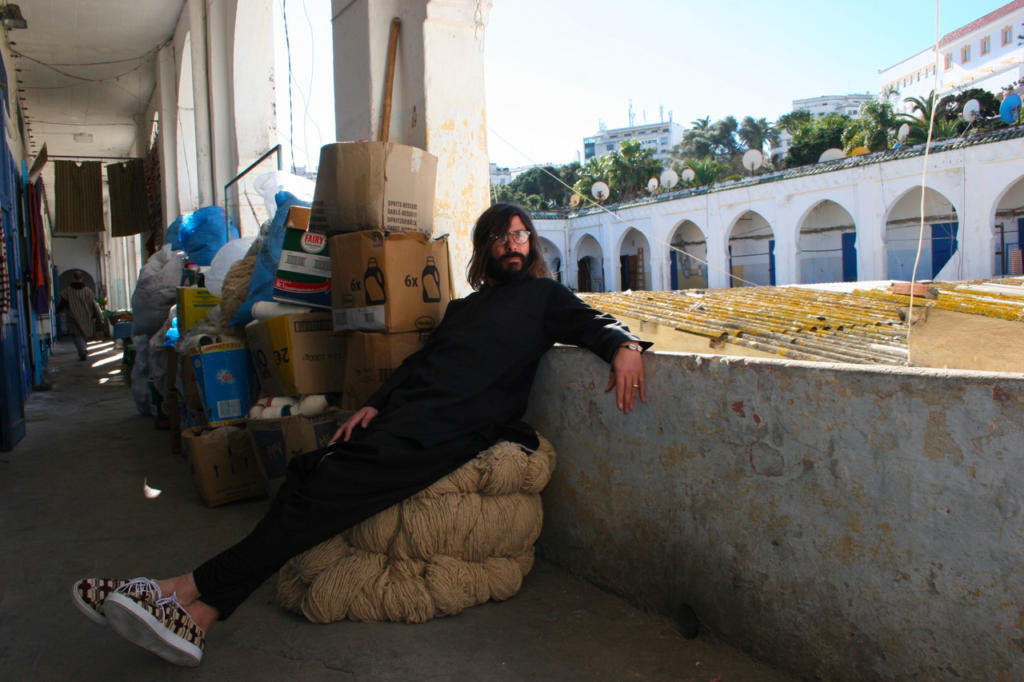 4- What is the meaning of your creative experience with this virtual exhibition?
4- What is the meaning of your creative experience with this virtual exhibition?
TRACES VR & Augmented is an evolutive retrospective built as a conversation around three central thematics : Memory, the Post-Tribal and the presence of women in my work. Curated by We R the Nomads this virtual reality edition was launched on the occasion of London Frieze Digital 2020 on Friday October 9th alongside a Zoom art talk followed by a live virtual viewing moderated by Janet Rady Fine Art of London involving guests Daniela Spoknik of Palais Aziza Marrakech and Rome based curator and Art Advisor Sveva Manfredi Zavaglia . But furthermore I see it as an interwoven web of creative initiatives and cross border friendships moving forward and towards the same direction, in reaction to challenging planetary circumstances. Hosted on Nouvelle Vague Artspaces VR platform it involves a multi-level collaboration with Daniela Spoknik of Palais Aziza with whom my wife Camilla and I – as We R The Nomads – originally worked with curating the physical TRACES exhibition in Marrakech through January-February 2020. It was set to open in March as an extension of my Memorandum Of the Unknown Path monumental installation at the Theatre Royal de Marrakech, presented on the Public Program of the 1-54 2020 African Art fair. A week later the world went into a lockdown. Our response to it is this show.
Also onboard my historic dealer, agent and friend Janet Rady Fine Art with a handpicked selection from TRACES organized as an Artsy online viewing room and San Francisco based Kebira Foundation to whom parts of the proceeds will be redirected to help Moroccan artists under lockdown.
5- Where did you develop your artistic sense the most in which technique?
If I were to use a cliché I would say that living in exile following the Iranian Islamic revolution of 1979 – flying out on a PanAm flight to Rome one fine morning aged four – gave me reason to raise a voice. There is a tradition of excellence in my family, an engrained love of science, of culture and history that I subsequently inherited. Besides the classical education of my grandfather, the atmosphere at my father’s houses is Andalusia and then later in Marrakech was very sixties, infused with the music of the Doors and Bob Dylan along with strong 20th century literature – Hemingway, Bukowski, Paul Bowles – Italian neorealist cinema of Fellini, Antonioni or Ettore Scola and the Persian spiritual poetry of Rumi, Attar or Khayyam. My oil paint polo paintings were displayed on the walls of the villa and I would pick up my brushes and set to work and as soon as I came home from Paris.
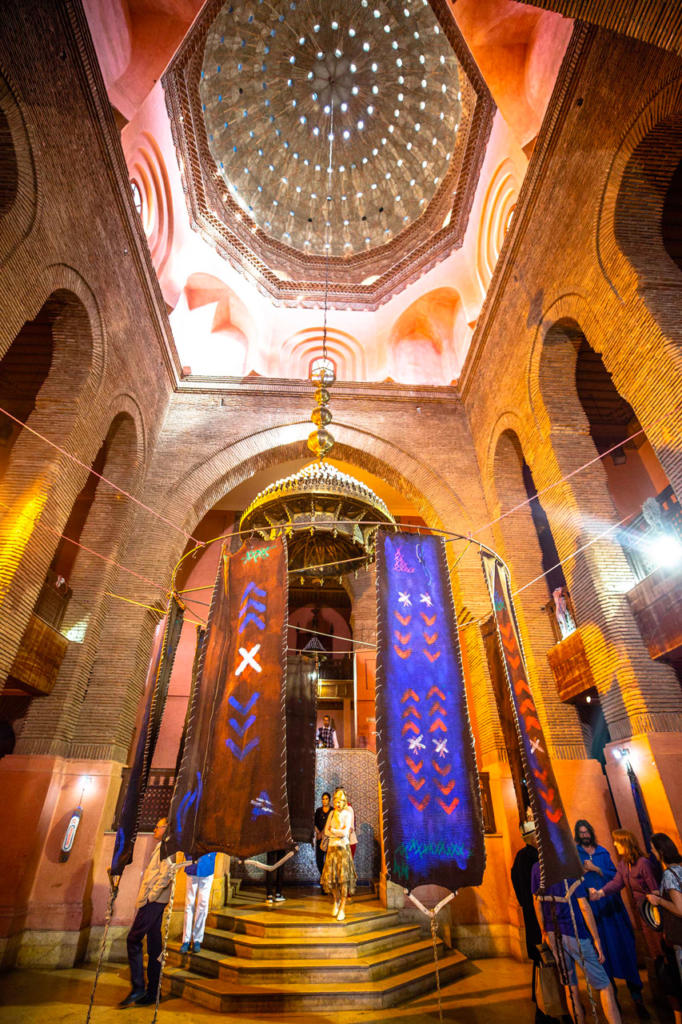 6- Tell us in detail how your inspiration comes?
6- Tell us in detail how your inspiration comes?
Picasso famously stated that true inspiration comes with hard work. In my mind it is a thread, a train of thought, a continuous exercise of observation and research involving processes of intellectualization, conceptualization and expression of raw feeling.
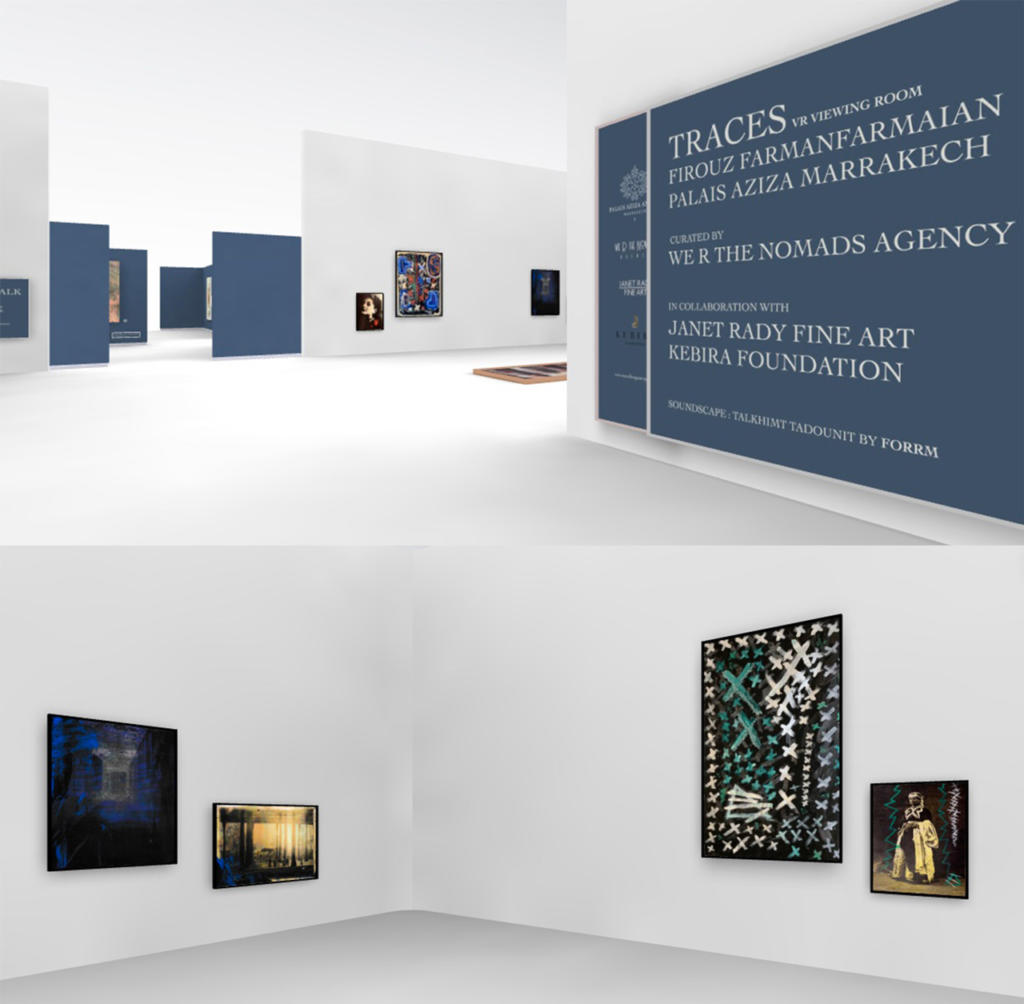 7- Why and how does your spirit approach this way of thinking?
7- Why and how does your spirit approach this way of thinking?
Contemplation, curiosity, voraciousness dans le desordre!
8- How does this moment influence an art work?
When I set out to paint, it is essential to be in a flux with the world, rooted in the direct present and extemporize. NY curator and dear friend Lisa de Simone used the word jazz defining my process. I relate to how jazz evolves into moving forms, curves and constructs. In that same fashion, my forms are constantly evolving and progressing.
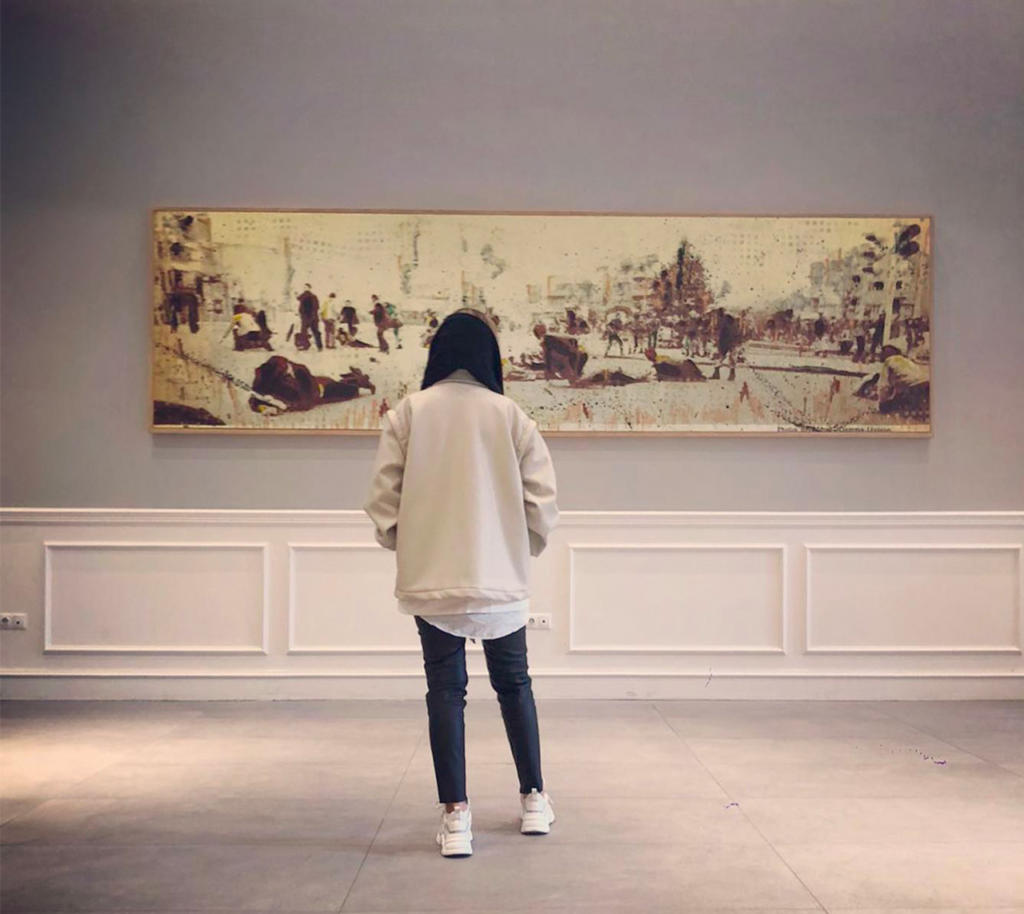 9- Your next presentation /talk?
9- Your next presentation /talk?
Next, Janet Rady and I will hold a live art-talk to discuss our past ongoing and future multi platform collaborations. We will also talk of TRACES VR & Augmented. It will happen on my Instagram page @firouzfarmanfarmaian on Friday 4 December @7pm CET/ 1pm MIAMI time.
10- How nature is integrated into your works…you return to nature through your works…
My link to nature is the first most important thing in my creative life. It’s study is a bottomless source of inspiration, of regeneration – of raw beauty. The lessons are all there to be learnt.
I return to the contemplation of our planet at the start or at the end of all my cycles, working on the growth of my linearities, reflecting on the growth of my philosophies. I have been going through a long phase of fascination for geological stone formations linked to the post-glacial period. That phase took its roots in my many trips to Finland and to New York city where much of the visible bedrock was shaped by ice. I called the first studies Erratics after rocks sculpted and transported millions of years in the heart of glaciers. These studies grew into a collection of important monumental panels. The Organics, Season of The Land, Strata, Scrawls, Barks or Rivers of Heraclites series amongst others came to form my Organic Abstraction segment. Ultimately they led to the implementation of my actual forms, that marry post-tribal exploration and archaic cosmogonic symbols with my new found linearities. But furthermore I am exploring 3D print and virtual reality extensions. Nature and technology need to be embraced in order to transition towards our future.
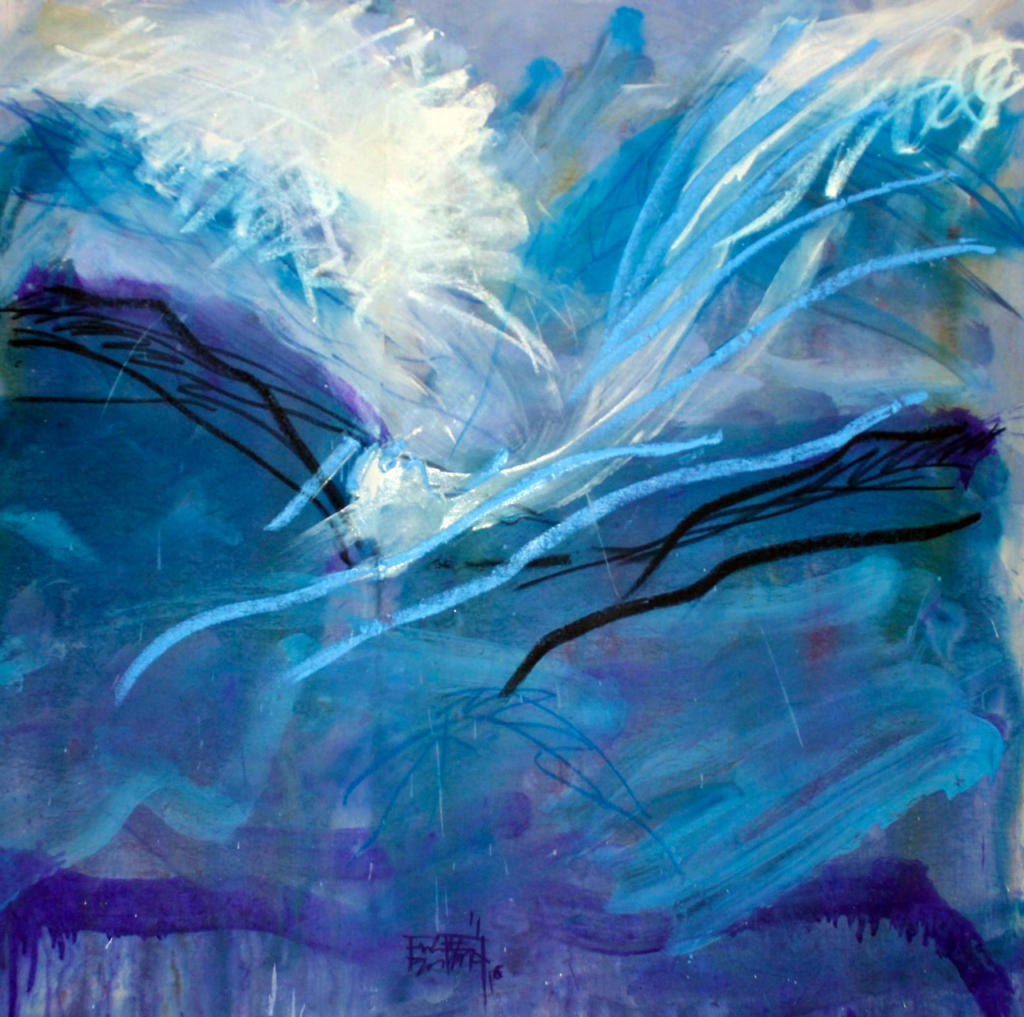 11- What are you looking for? And what do you want for your future?
11- What are you looking for? And what do you want for your future?
We need to accept a positive planetary vision for our lives.
She is an independent curator, art advisor and international marketing management consultant. For more than 20 years, he has been a cultural designer of events related to contemporary art with particular attention to unusual spaces and interactions with other arts.
